New Jersey residents don’t have to give up their beloved bird-watching time just because the temperature drops. There are several birds that make their home in the eastern state year-round, staying even during the dead of winter. Here are 7 birds that spend their winter in New Jersey. See how many you can spot the next time you go out!
American Goldfinch
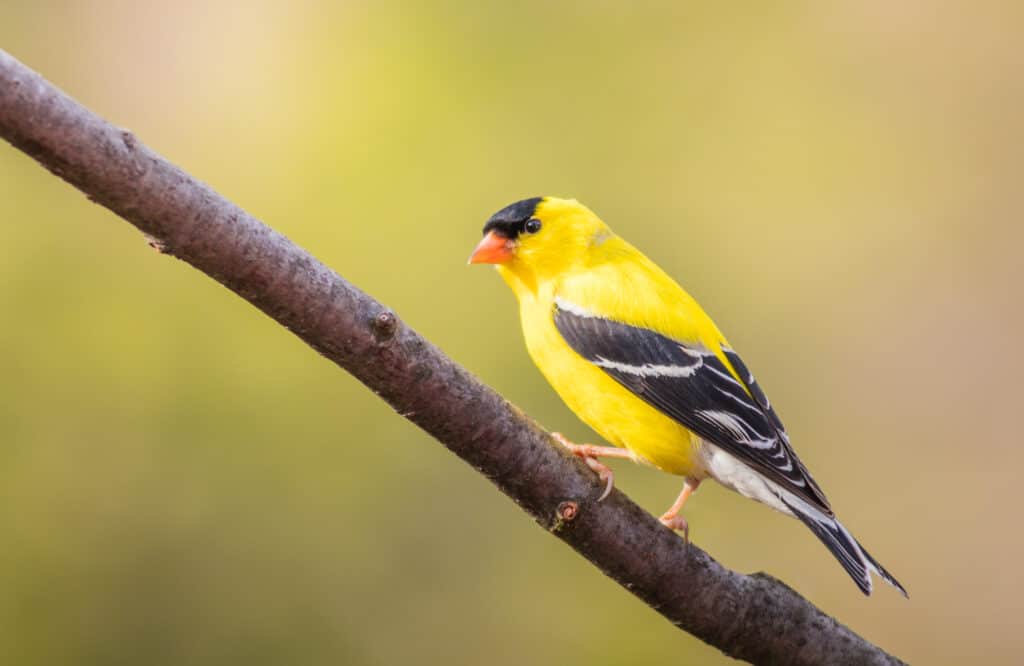
The bright yellow coloring of American Goldfinches turns to an almost brown during the winter.
©Rabbitti/Shutterstock.com
The beautiful American Goldfinch (Spinus tristis) loses much of its color in the winter. Both males and females turn a shade of brown, so it may be more challenging for intrepid New Jersey bird watchers to find them.
These small, lovely birds frequent semi-open grassy areas and the edges of woodlands. Their primary diet is seeds. But they have been known to partake in some insects, sap, and bark.
Northern Flicker
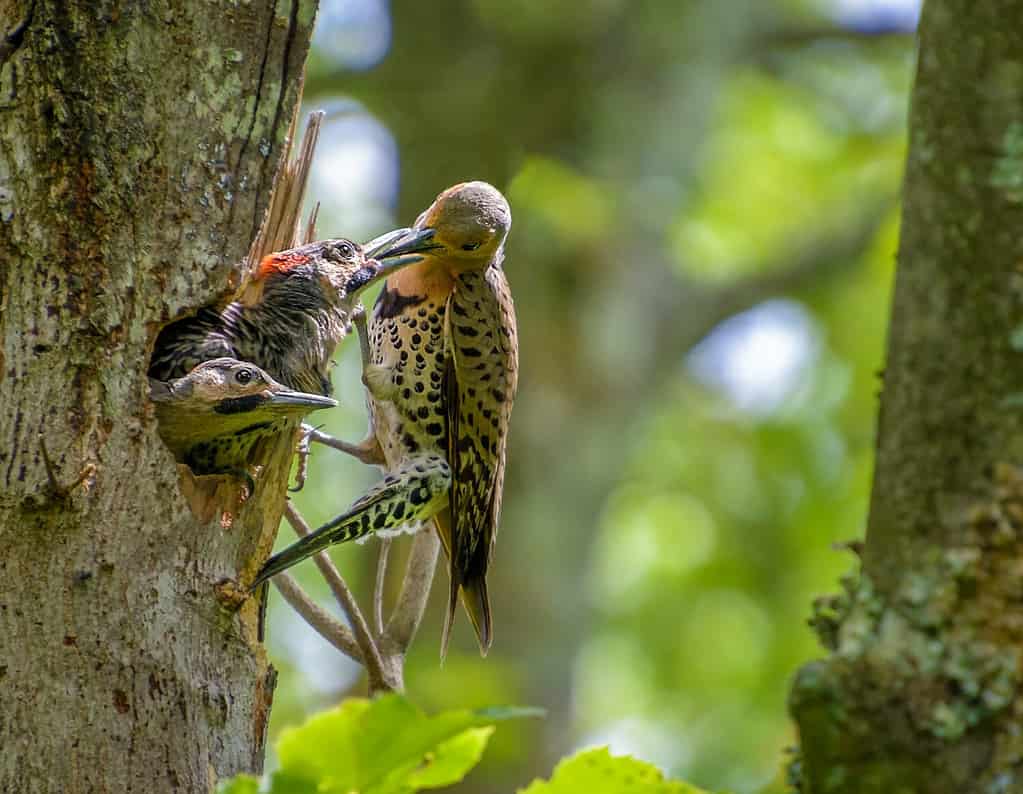
Northern Flickers are technically woodpeckers.
©K Quinn Ferris/Shutterstock.com
These fascinating birds aren’t as common as they once were. However, you can still spot some Northern Flickers (Colaptes auratus) in New Jersey during the winter. They are technically a woodpecker and have relatively unimpressive coloring from the outside. But they show off a serious pop of color under their wings while flying.
As long as there are trees around, you may catch a glimpse of this widespread bird. Northern Flickers eat ants, insects, fruits, and occasionally nuts and seeds.
House Sparrow
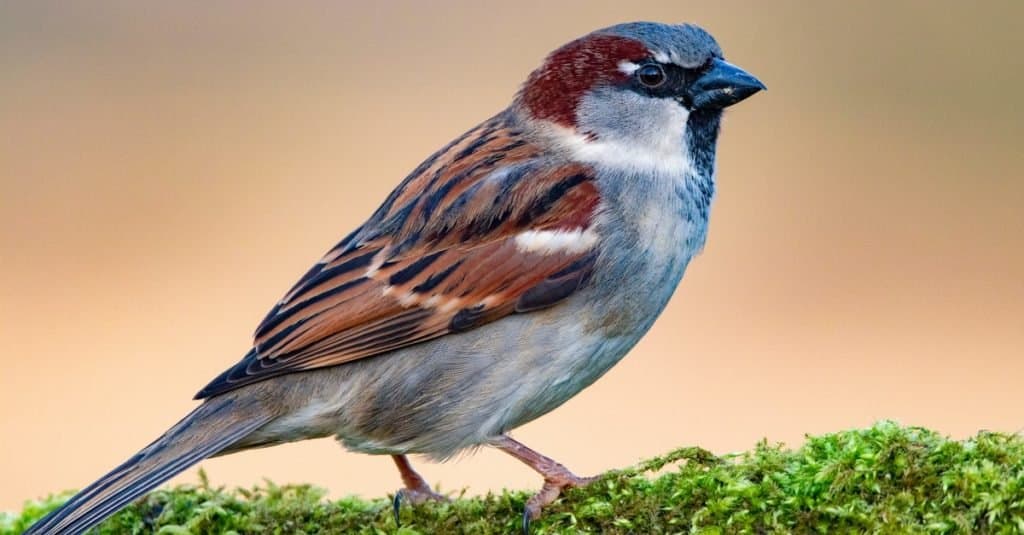
Male House Sparrows have more distinctive and eye-catching feather colors than females do.
©Craig Howman/Shutterstock.com
The House Sparrow (Passer domesticus) gets its name because it loves hanging out around people. While these tiny birds definitely aren’t domesticated, they don’t stray far from urban areas. House Sparrows have beautiful singing “voices.”
You won’t ever spot these birds in the natural world. They prefer urban areas or farmland close to humans. House Sparrows live in the east year-round, so you can easily see them in New Jersey during the winter. House sparrows love seeds, but will occasionally eat insects.
Northern Cardinal
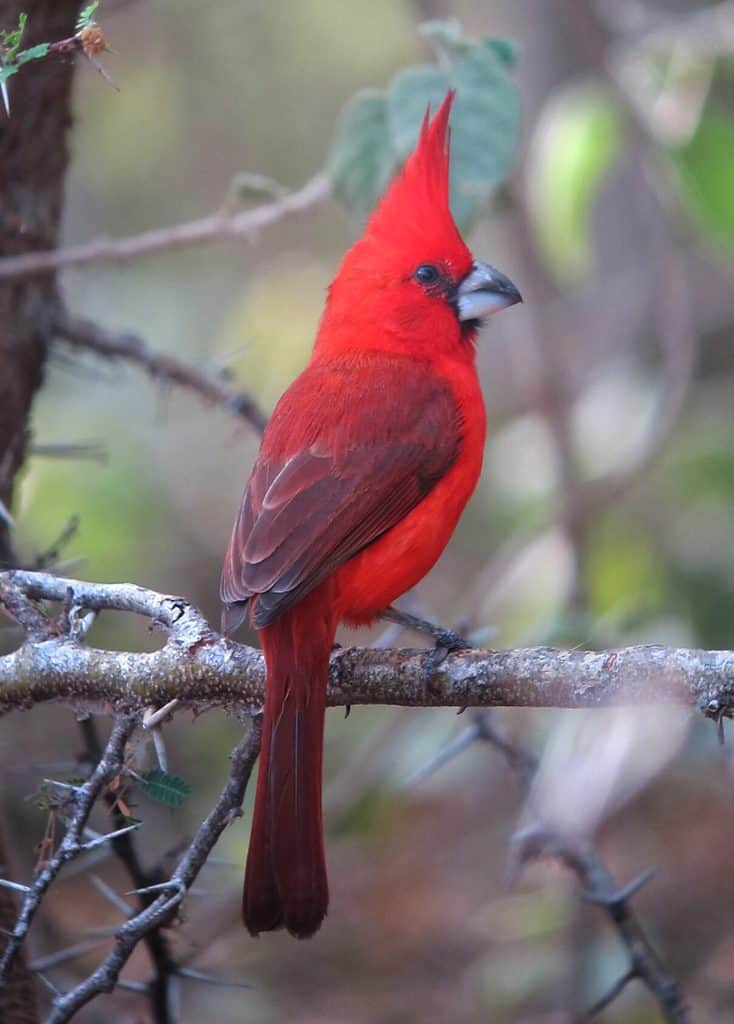
Northern Cardinals are easy to spot, thanks to their brightly colored feathers.
One of the more distinctive birds in New Jersey is the Northern Cardinal (Cardinalis cardinalis). There is no mistaking the brightly colored red feathers and tuft on its head. It is so beloved that at least seven states named it the state bird.
These stunning birds live nearly anywhere they can find thick bushes or thickets. Bird watchers may see them along woodland edges or closer to town. Northern Cardinals aren’t particularly picky about their diet. They will happily eat a variety of insects, seeds, and berries.
Blue Jay
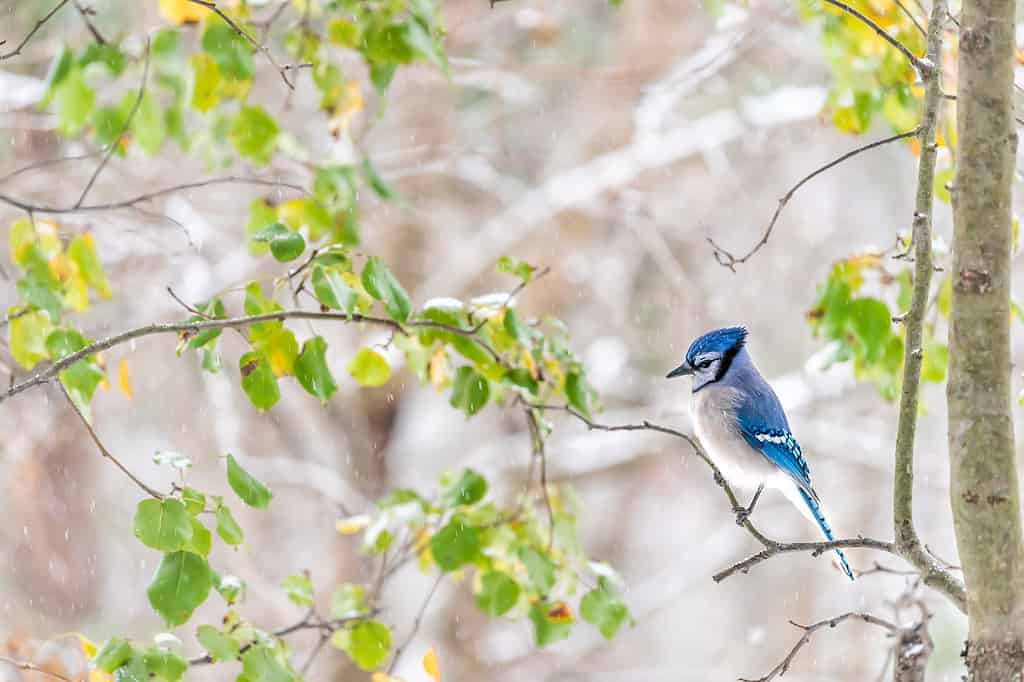
Blue Jays stand out no matter where they are, thanks to their bright feathers.
©krblokhin/iStock via Getty Images
Another well-known and well-loved bird in New Jersey is the Blue Jay (Cyanocitta cristata). They are loud and covered in bright blue feathers. These opportunistic eaters love visiting bird feeders, so they have naturally come closer to town.
In their natural habitat, Blue Jays prefer gardens, woods, and city parks. However, they almost always avoid coniferous forested areas during breeding season. These birds are omnivorous. They primarily feed on plant matter but will happily chow down on insects.
American Robin
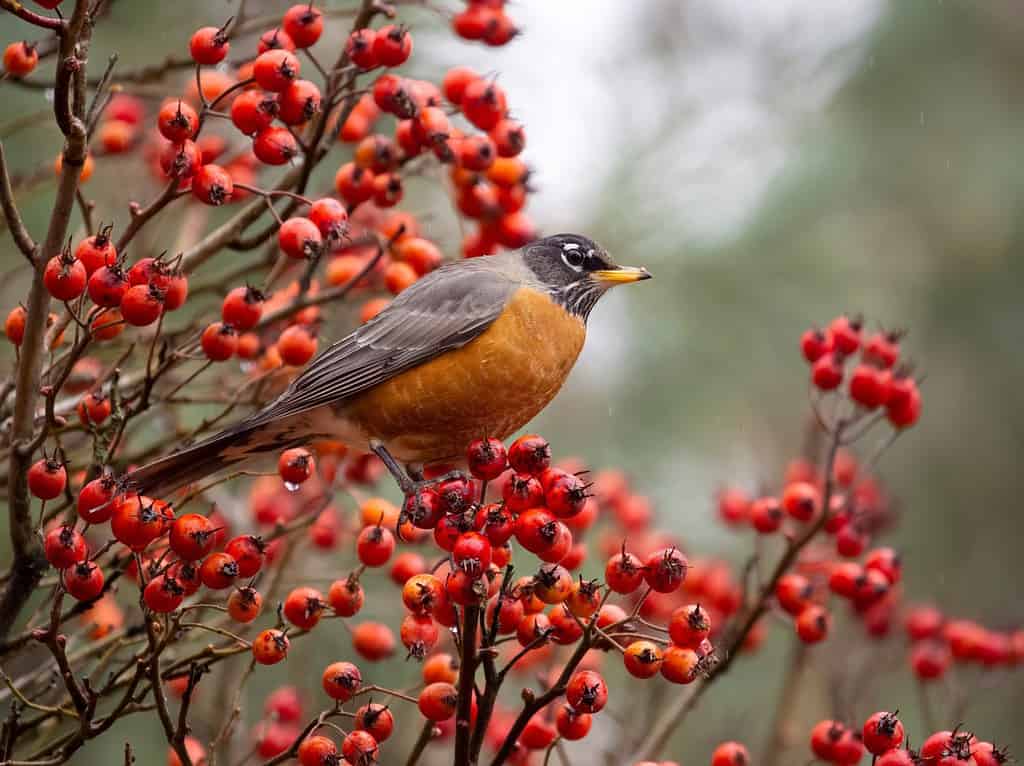
American Robins are beautiful songbirds and are quite populous throughout the United States.
©Erni/Shutterstock.com
You have likely heard the beautiful singing from American Robins (Turdus migratorius) even if you weren’t sure where it came from. These familiar birds live throughout much of North America and love spending time near people. Some lucky New Jersey residents may even see one hanging out on their porch or windowsill.
During the winter, they are most common near trees that grow berries. In other parts of the year, you may spot them in forests, parks, or in towns where plenty of bushes and shrubs are. American Robins eat mostly insects, earthworms, and berries. However, the latter is the bulk of their diet in the winter.
Tufted Titmouse
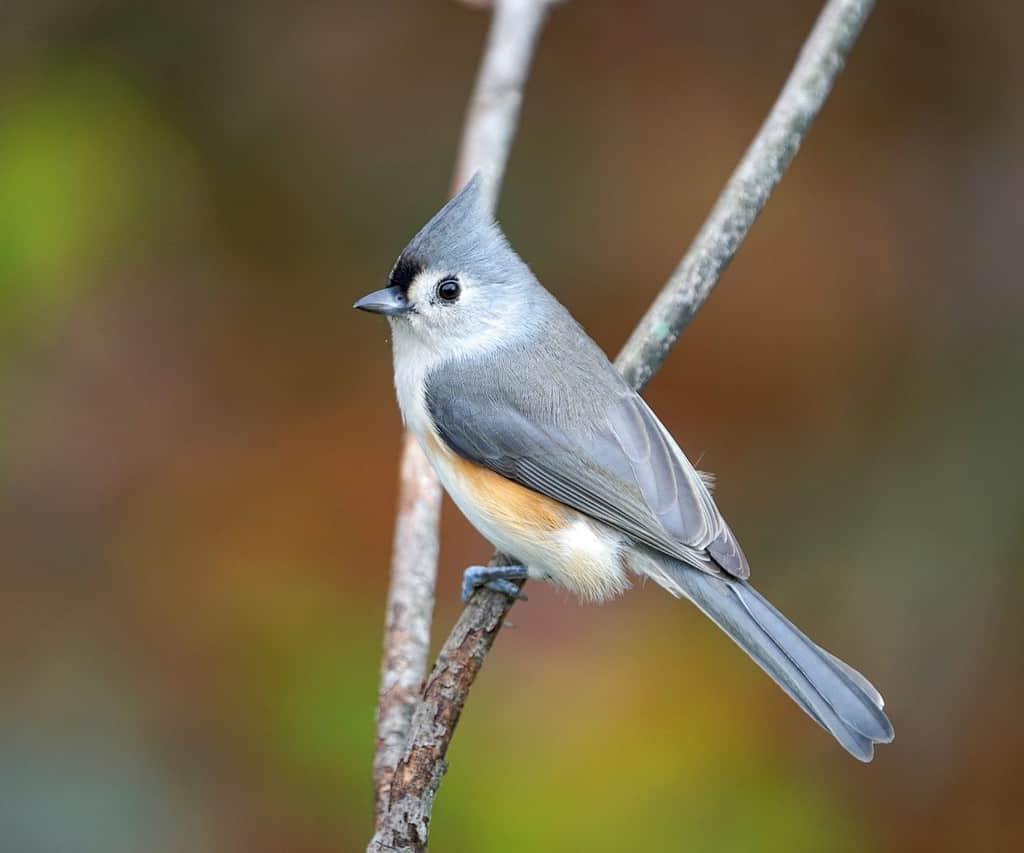
The sweet little Tufted Titmouse has a crest on its head and sings beautifully.
©ND700/Shutterstock.com
One bird that appears to be growing in numbers in New Jersey is the Tufted Titmouse (Baeolophus bicolor). It has a well-known song that permeates forests and suburban areas where it frequents. They have a distinct crest on the top of their heads but are otherwise unremarkable in appearance. These birds are cousins of chickadees, which explains why they are such good singers.
The Tufted Titmouse prefers wooded areas. You may spot it in groves or amply shaded urban areas. They primarily feast on a variety of insects. But they also enjoy nuts, seeds, berries, and other fruits.
The photo featured at the top of this post is © Rizwan Mian/Shutterstock.com
Thank you for reading! Have some feedback for us? Contact the AZ Animals editorial team.







